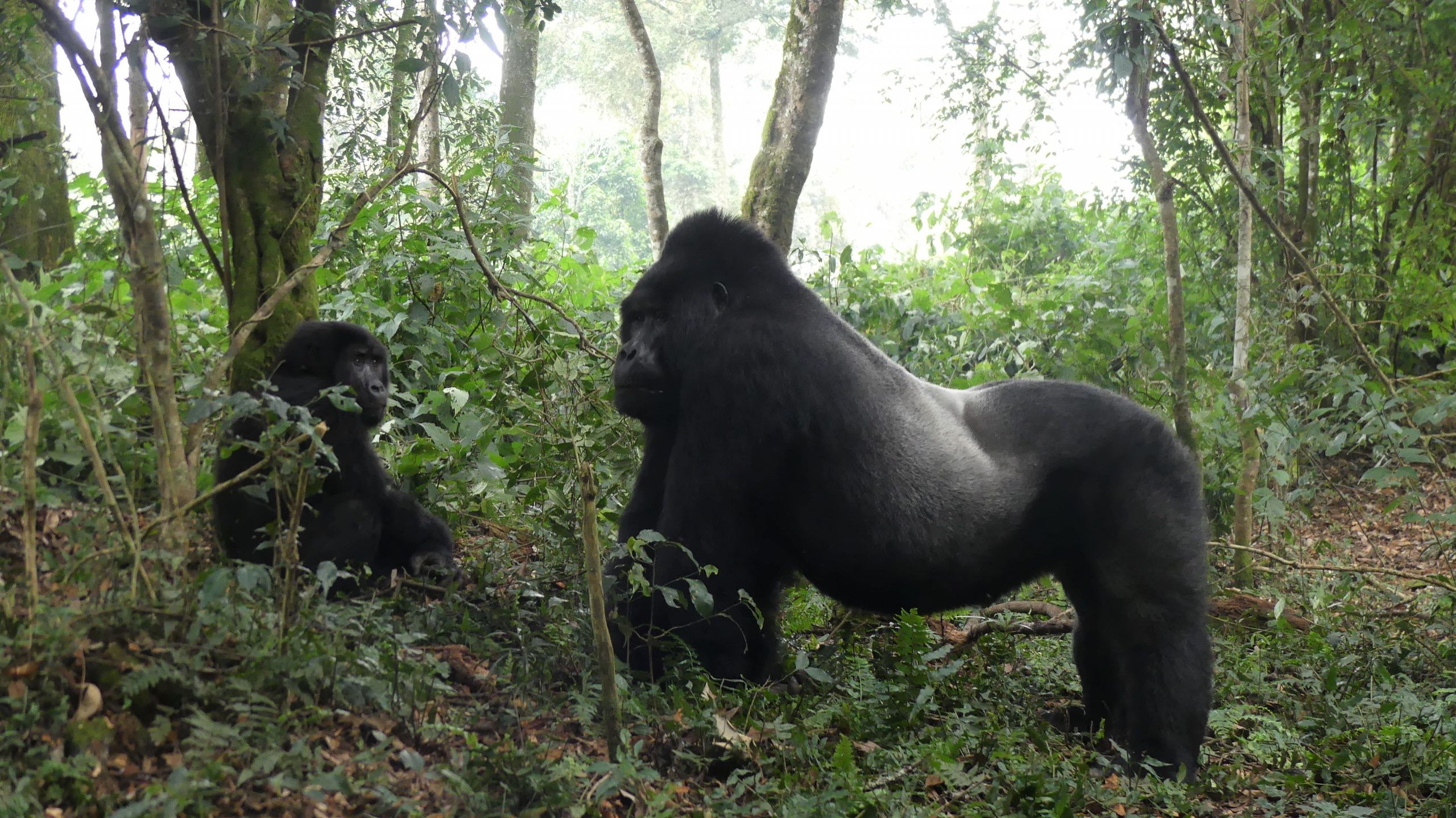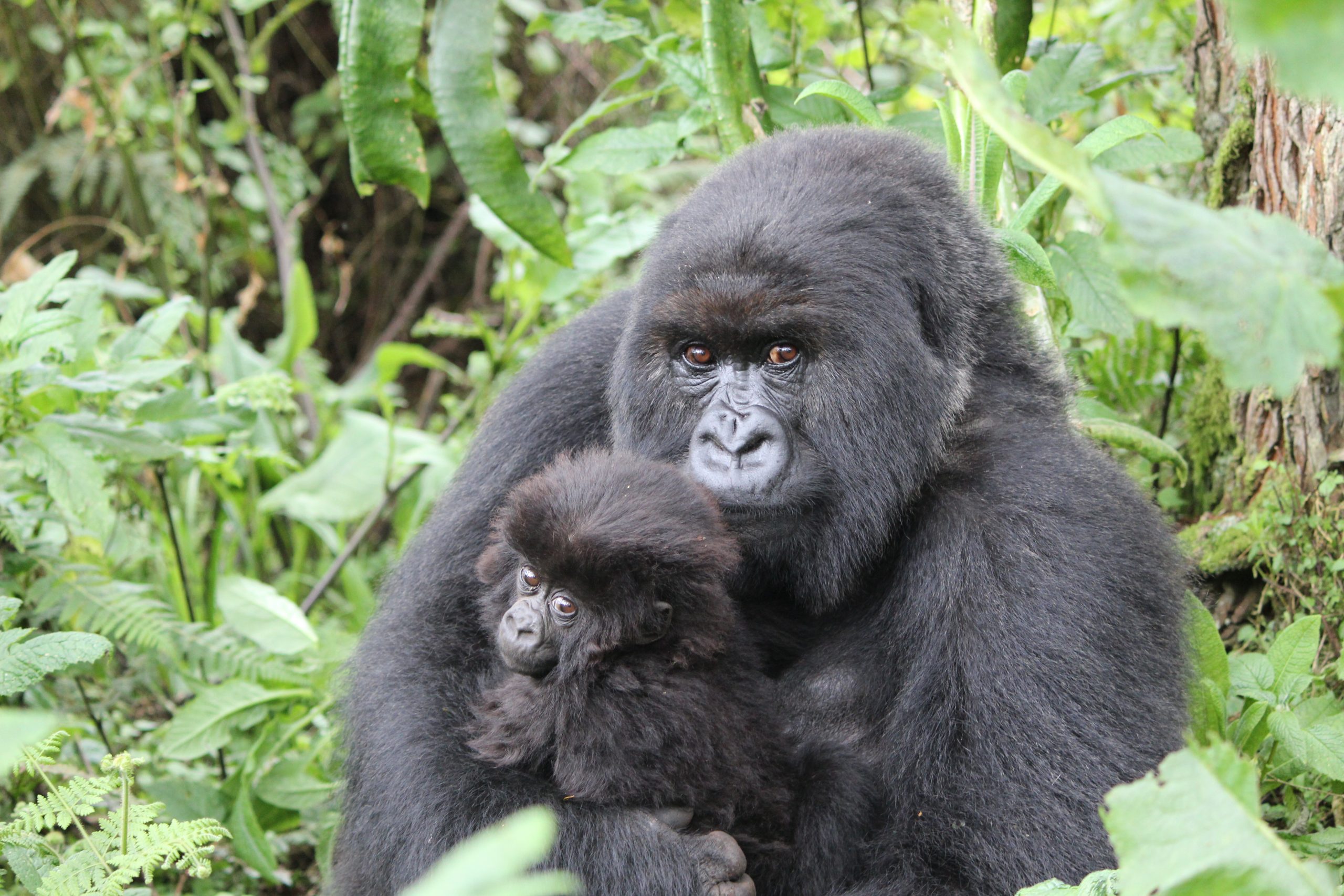Mountain Gorillas
The Greatest Apes
Mountain gorillas are an endangered species of great ape. They are a subspecies of eastern gorillas, and as their name implies, they live in the high mountains at elevations of 8,000 to 13,000ft.
Mountain gorillas are incredibly social primates, generally living in family groups led by one dominant silverback male. They play an important role in the ecosystem because of their diet; they are predominantly plant-based and large-scale grazers of vegetation. Without mountain gorillas, their local environment could be negatively impacted from a disbalance in the food chain.


Population Size
Over the last several decades the number of known mountain gorillas has increased, through advanced techniques and greater survey effort, both populations are believed to have experienced intrinsic growth. According to the Bwindi – Sarambwe mountain gorilla census results released in Dec 2019, the estimated global figure of known mountain gorillas in the wild today is 1063.
Status
Mountain gorillas are the only ape for which there is evidence of increasing population size. In 2018, the threat status for mountain gorillas was downgraded from ‘Critically Endangered’ to ‘Endangered’ in the IUCN Red List of Threatened Species owing to a recorded increase in their population. Whereas this signals an improvement, mountain gorillas still need a lot of protection and monitoring to survive.
Physical Structure
Gorillas are the largest of the great apes. An adult male can weigh over 180 kilos (400 pounds). When mature, males develop a silver-grey saddle, hence the name ‘silverback’. Adult females weigh about 90 kilos (200 pounds).
Geographical Location
Mountain gorillas exist in two isolated populations: the Virunga Massif of extinct volcanic mountains on the borders of the Democratic Republic of Congo (DRC), Rwanda and Uganda, and in the Bwindi Impenetrable National Park in Uganda.
